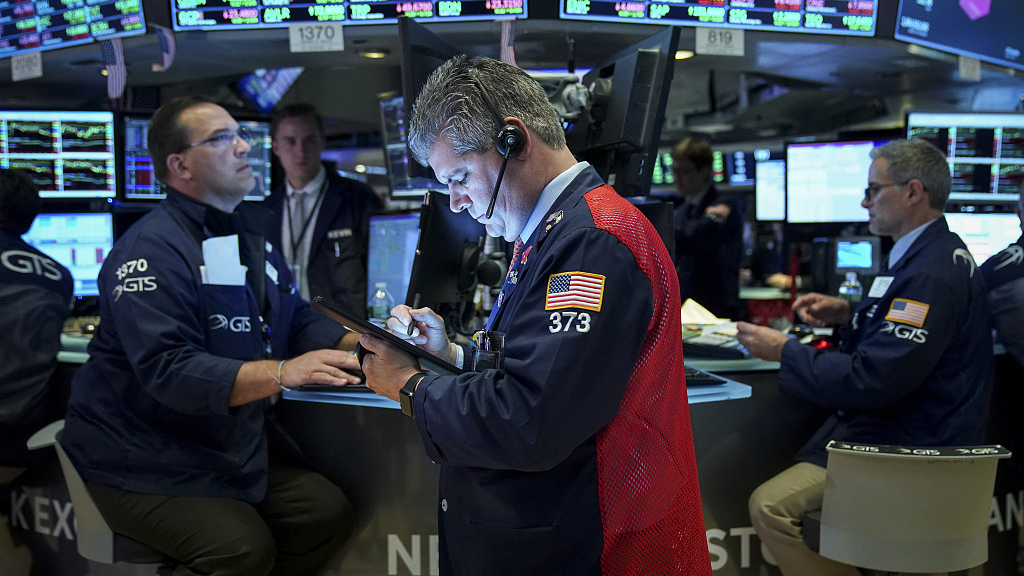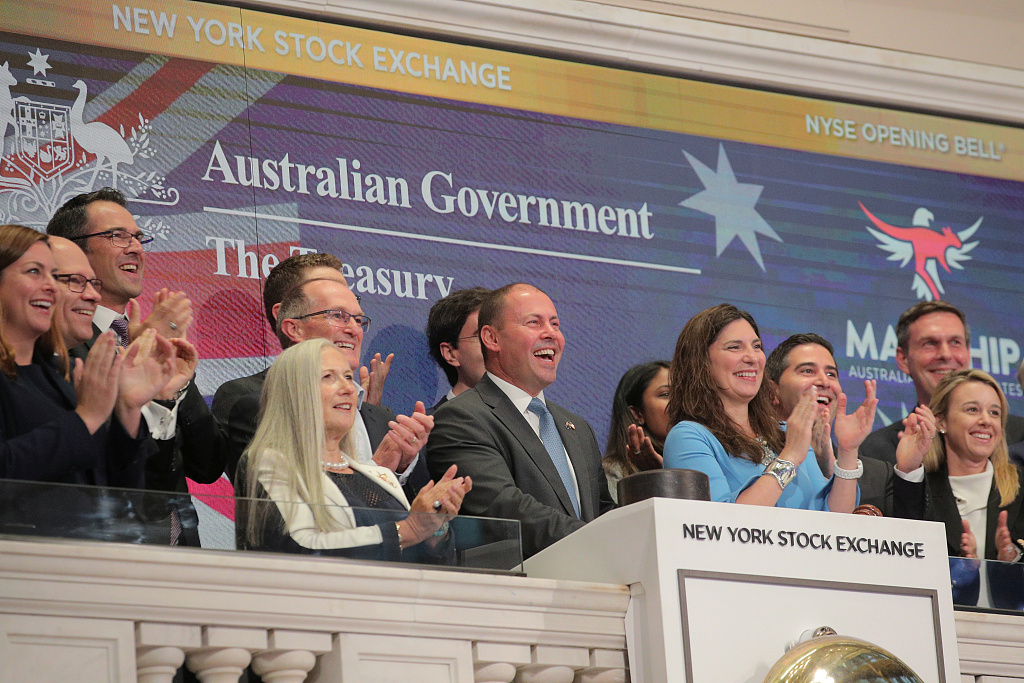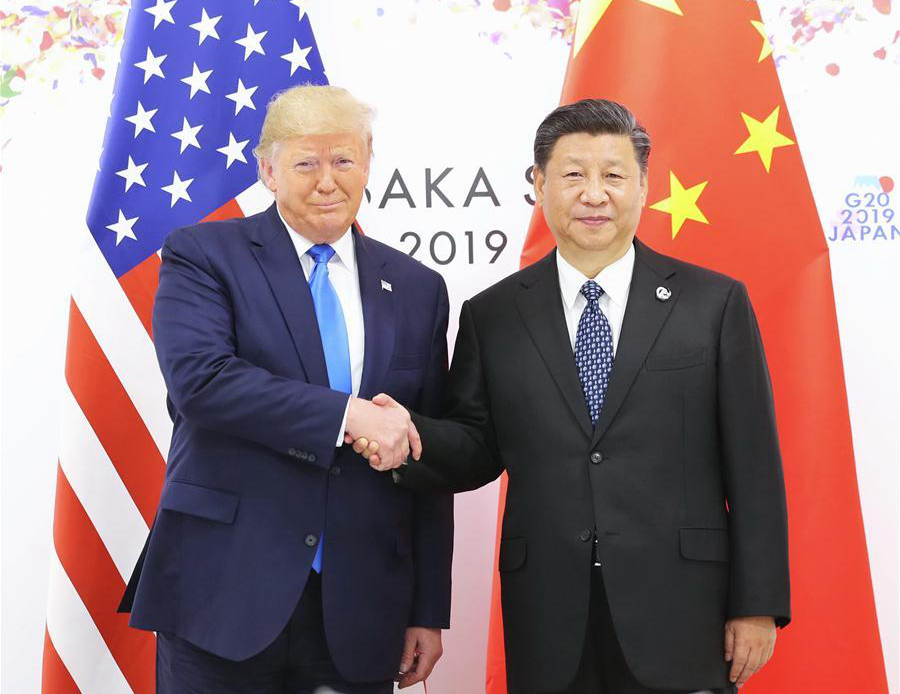

Editor's note: Tom Fowdy is a British political and international relations analyst and a graduate of Durham and Oxford universities. He writes on topics pertaining to China, the DPRK, Britain and the U.S. The article reflects the author's opinions and not necessarily the views of CGTN.
To nobody’s surprise, U.S. President Donald Trump triumphantly cheered the surges in the American stock market on Twitter following the conclusion of a highly eventful weekend. Quoting the Wall Street Journal’s claim that American stocks capped their “best first half since 1997,” the president made no reservations about taking credit for it.
Undoubtedly, Trump’s trade truce with Chinese President Xi Jinping was very much behind the newly found optimism on both sides of the Pacific. The S&P 500 index broke open on a new record high of 2,971. The Dow Jones followed sharply. In Shanghai, the composite index surged a whopping 2.2 percent, while down in Guangdong, the Shenzhen Composite also hit a tally of 3.5 percent. In Britain, London’s famed FTSE 100 also made meaningful gains.
As Howard Gold of MarketWatch believes, markets are responding to a sentiment emerging from Osaka that the trade war is “all but over.” While political analysts have been more reserved in drawing such hasty conclusions, particularly due to the unpredictability that often comes with Trump and, of course, no ability to conceive what form a realistic deal would take, it is fair to note that the events in Japan represent a game changer.
While an agreement may be a long process, the President is nevertheless signaling through his diplomacy that he is no longer pursuing confrontation with China, and given this, the chances of a renewed escalation or hostility in the trade war are slim. The belligerent phase of the conflict is over.

Josh Frydenberg MP, treasurer of the Commonwealth of Australia, rings the opening bell at the New York Stock Exchange (NYSE) in New York, U.S., June 19, 2019. /VCG Photo
Although one should never get carried away, there were some indicators that Osaka was markedly different in contrast to previous dialogue pertaining to the China-U.S. trade war, particularly on the note that Trump publicly backed down on certain threats. From 2018, the administration had repeatedly and publicly threatened to extend tariffs to all of China’s exports to the U.S. This outcome was kept on the table even during the December-May phase of talks between Washington and Beijing. More tariffs and tariff increases were always there if talks failed.
Now, however, the president appears to have discarded that. In the announcement following the meeting, Trump stated that there would be no new tariffs. Although it is true that he could easily go back on his word or U-turn to hostility again, this is Trump. His actions nevertheless represent a significant climb-down on the U.S. position and the first time the White House has publicly revoked a threat of trade war escalation. That means even if talks are not straightforward, it is less likely the president will respond with an adversarial response. In essence, one can assume the trade war has reached its “ceiling.”
The second big indicator of difference is Huawei. This also marks the first time the U.S. has made concessions related to the Shenzhen firm. Typically, when America escalates the trade war, it also ups the ante against the company, the “entity list” being the most recent and severe move.

Chinese President Xi Jinping meets with U.S. President Donald Trump in Osaka, Japan, June 29, 2019. /Xinhua
Now, Trump has signaled his willingness to allow the company to purchase from some U.S. markets again. The concession not only indicates he’s serious about negotiations, but it also demonstrates, as per his comments about businesses complaining about the ban, that he also is mindful of the long-term repercussions for American enterprises.
In turn, this puts him on a clearly different page to many U.S. China hawks, who were furious at the decision. While these figures are engrossed in “strategic competition” and “decoupling,” the president, as a businessman at heart, still wants a profitable relationship with China, even if that has to be incorporated into a new political reality.
Given this, markets will have observed Trump’s rhetoric and the outcome is a feeling of optimism. The U.S. president is now approaching his term's “end-game.” It is the period in which things must be achieved and successes must be heralded as he looks to campaign for 2020. This is influencing his mode of diplomatic conduct accordingly. One may also note his renewed attempts to talk and engage with the Democratic People's Republic of Korea leader Kim Jong Un with the view of a future agreement.
Thus, there is a sentiment that this truce in the trade war will not be a “one-off” agreement or something else jettisoned down the line but that without the immediate or visible threat of future confrontation, it will hold out well. You can certainly never tell with Trump, but investors are feeling this just might be different.
(If you want to contribute and have specific expertise, please contact us at opinions@cgtn.com.)

Copyright © 2018 CGTN. Beijing ICP prepared NO.16065310-3
Copyright © 2018 CGTN. Beijing ICP prepared NO.16065310-3